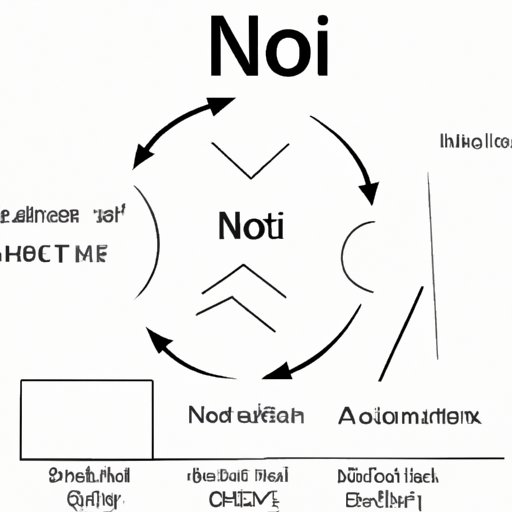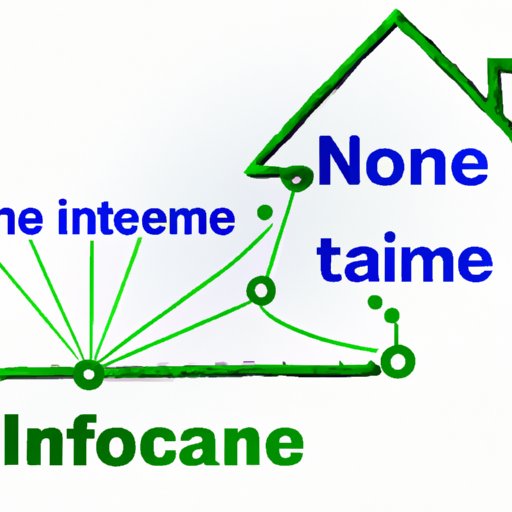Unlocking the Meaning Behind NOI: A Comprehensive Guide to Understanding This Important Term
If you are a business owner, investor, or someone who is simply interested in the world of finances, you may have come across the term “Net Operating Income” or NOI. While it may seem like just another financial term, NOI is actually a critical indicator of the success and profitability of a business or investment property. In this comprehensive guide, we will explore what NOI is, its components, how it differs from other similar terms, and its various uses across multiple fields.

Definition of NOI and its Components
At its simplest, NOI is the difference between a property’s gross income and its operating expenses. In other words, it’s the income a property generates after all operating expenses such as taxes, repairs, and general upkeep have been subtracted. NOI can be calculated by using the following formula:
NOI = Gross Rental Income – Operating Expenses
The Gross Rental Income includes all income generated from a property such as rental income, parking fees, and laundry revenue. Operating expenses include any expenses incurred in running the property such as taxes, insurance, repair, and maintenance costs.
Understanding NOI requires a clear understanding of its components. Gross Rental Income is the total revenue a property generates from all rental sources, while Operating Expenses are all costs that are necessary to operate and maintain the property, excluding any financing costs or capital expenditures. By subtracting the Operating Expenses from the Gross Rental Income, we arrive at NOI.
Examples of How NOI is Used in Various Fields
NOI is commonly used in the real estate industry as a key performance indicator. The NOI of a property is an important metric when determining the value of an investment property. Real estate investors and analysts use NOI to compare the profitability of different properties and evaluate whether a particular property is a good investment.
NOI is also frequently calculated in the commercial real estate industry, where it is used to determine the value of a property based on its income. In this case, property value is determined by dividing the NOI by the cap rate, resulting in the total property value. The cap rate is a measure of the risk associated with a particular property, and it’s used to calculate the return on investment.
The concept of NOI is not limited to the real estate or financial industries. In the medical field, for instance, hospitals may calculate their NOI based on their service revenue, minus the expenses incurred in running the hospital. Similarly, a manufacturing company may calculate its NOI based on its total revenue and expenses related to the manufacturing process.
How NOI Differs from Other Similar Terms
There are several financial terms that are similar to NOI, including gross income, earnings before interest, taxes, depreciation, and amortization (EBITDA), and net income. While these terms may seem related, they are not interchangeable, and each has a unique application.
Gross income refers to the total income received from a particular source, including both operating and non-operating income. Gross income takes into account any revenue from sources outside of the primary operation of the business. EBITDA, on the other hand, measures a company’s profitability by adding back non-cash expenses associated with the company’s operations. Net Income refers to a company’s total income minus all the expenses incurred, including financing costs, capital expenditures, and taxes.
While all these terms aim to measure the profitability or earning power of a business, NOI takes into account only the operating expenses of a property and is often used exclusively in the real estate industry as an indicator of a property’s profitability.
A More Detailed Examination of NOI’s Definition and Uses
As mentioned earlier, NOI is the difference between the Gross Rental Income and the operating expenses; it is a crucial key performance indicator used in evaluating the profitability of a property investment. Calculating NOI helps property owners and investors determine if they are generating enough income to cover the property’s expenses and make a profit.
NOI also helps real estate investors evaluate investment opportunities in various types of properties, such as commercial, residential, industrial, or retail. Other than helping investors evaluate their investments, individual property owners use NOI as a defensive financial tool to assess whether their properties are generating enough income to cover their expenses.
NOI, in many cases, is an essential component used in determining the value of a property. It is not uncommon for investors looking to purchase a property to evaluate properties using NOI rates. A higher NOI indicates that the property is more profitable and has good potential for a higher return on investment.
Discussion of the Impact of NOI on Decision-Making Processes
NOI has a significant impact on the decision-making processes of businesses. It helps them decide whether they should buy, hold, or sell properties. Additionally, understanding NOI helps businesses understand how much financing they require and forecast future earnings.
Knowing the NOI of a property also allows businesses to decide on how much rent they should charge to cover their operating expenses while still generating a profit. Property owners can also calculate how much they can afford to spend on maintenance, repairs, and upgrades while still maintaining an NOI that generates profit.
Overview of How Other Key Performance Indicators Relate to NOI
NOI is one of several key performance indicators used in evaluating a property investment. Other performance indicators used alongside NOI include cash flow, return on investment, and cap rate. These indicators give investors and business owners a broader view of the value of a property investment.
Cap rate is calculated by dividing NOI by the property’s value. It’s often used alongside NOI to determine the rate of return on investment. Similarly, cash flow gives investors an idea of how much cash the property will generate over time, which is important to assess whether the investment is sustainable.
While these indicators are related, they each give a unique perspective on the value of an investment, making it essential for businesses to use more than one of them when making investment decisions.
Examination of How NOI Helps Businesses Make Informed Decisions
NOI helps businesses make informed decisions about their investments by providing an accurate picture of the profitability of a particular property. Because NOI takes into account only the operating expenses of a property, the income calculated is a closer reflection of the profitability of the property.
Understanding NOI helps businesses decide whether to hold, sell, or buy a property, as well as how much rent to charge to cover their expenses and generate profit. By understanding NOI, businesses can make more informed financial decisions that help them achieve and maintain profitability.
Overview of How NOI is Used in Real Estate
NOI is a crucial component of evaluating the value of a property in the real estate industry. It is used to evaluate investment opportunities, determine the property’s value, and assess the profitability of a property investment. Real estate professionals use NOI to evaluate properties that are suitable for investment, analyze the potential cash flow, and help investors make better decisions.
In real estate, NOI is essential to both buyers and sellers. For buyers, it helps them understand how profitable the property is, and for sellers, it helps them determine the price at which to sell the property. One important role played by NOI is to determine the value of a property by dividing the NOI by the cap rate.
Turning Data into Action: A Look at the Role of NOI in Decision-Making Processes
NOI helps businesses make informed decisions based on data. It helps property owners understand how the property is performing and how profitable it is. In turn, this data helps investors or property owners make informed decisions about whether to hold, sell or buy property.
NOI is an essential component in the decision-making process for businesses as it forms the baseline for evaluating a property’s profitability. It allows property owners and investors to make better decisions and adjust operations where needed to achieve profitability.
NOI can also be used in tandem with other financial key performance indicators (KPIs) to provide deeper insights into a property’s performance. Investors or property owners can use metrics such as cash flow, and return on investment to better understand how their investments are performing.
NOI in Real Estate: How This Key Performance Indicator Affects Property Values and Investment Opportunities
NOI is an essential financial metric used in the real estate industry to determine the value of a property investment. In determining a property’s value, NOI is divided by the cap rate, giving the property’s value. A higher NOI leads to a higher property value, and thus better investment opportunities.
Real estate professionals use NOI to make informed decisions by providing accurate insights into a property’s profitability. They can use NOI to analyze the potential cash flow of a property, which helps investors make better decisions. Ultimately, NOI helps real estate professionals make informed investment decisions that lead to profitability.
The Future of NOI: A Projection of Trends, Challenges, and Opportunities in This Critical Field
The future of NOI is promising, with more investors and businesses recognizing its importance in evaluating profitability. Additionally, improved technology and data analysis mean that accuracy and efficiency in calculating NOI will continue to improve in the future.
Despite the potential growth, there are still challenges to the adoption of NOI, such as the availability and accuracy of data, as well as the lack of standardized formulas. Additionally, the complexity of the calculations involved may deter some investors from using it.
Looking ahead, opportunities for the growth of NOI include continued innovation around data analysis, the development of new metrics that complement NOI, and further standardization of the calculation process. Ultimately, as data continues to be a fundamental component in decision-making processes across industries, NOI will remain at the forefront of determining profitability in the real estate and other financial sectors.
Conclusion
In conclusion, NOI is critical in evaluating the profitability and worth of a property investment, and also has multiple applications across various fields, including the medical field and manufacturing. Understanding NOI helps businesses make informed decisions around buying, holding, and selling properties. In the future, NOI will continue to be a crucial financial metric in decision-making processes.
As an investor, business owner, or anyone interested in finances, it’s essential to understand NOI and its applications. It is a valuable tool for evaluating investments, assessing profitability, and ultimately making better decisions.
